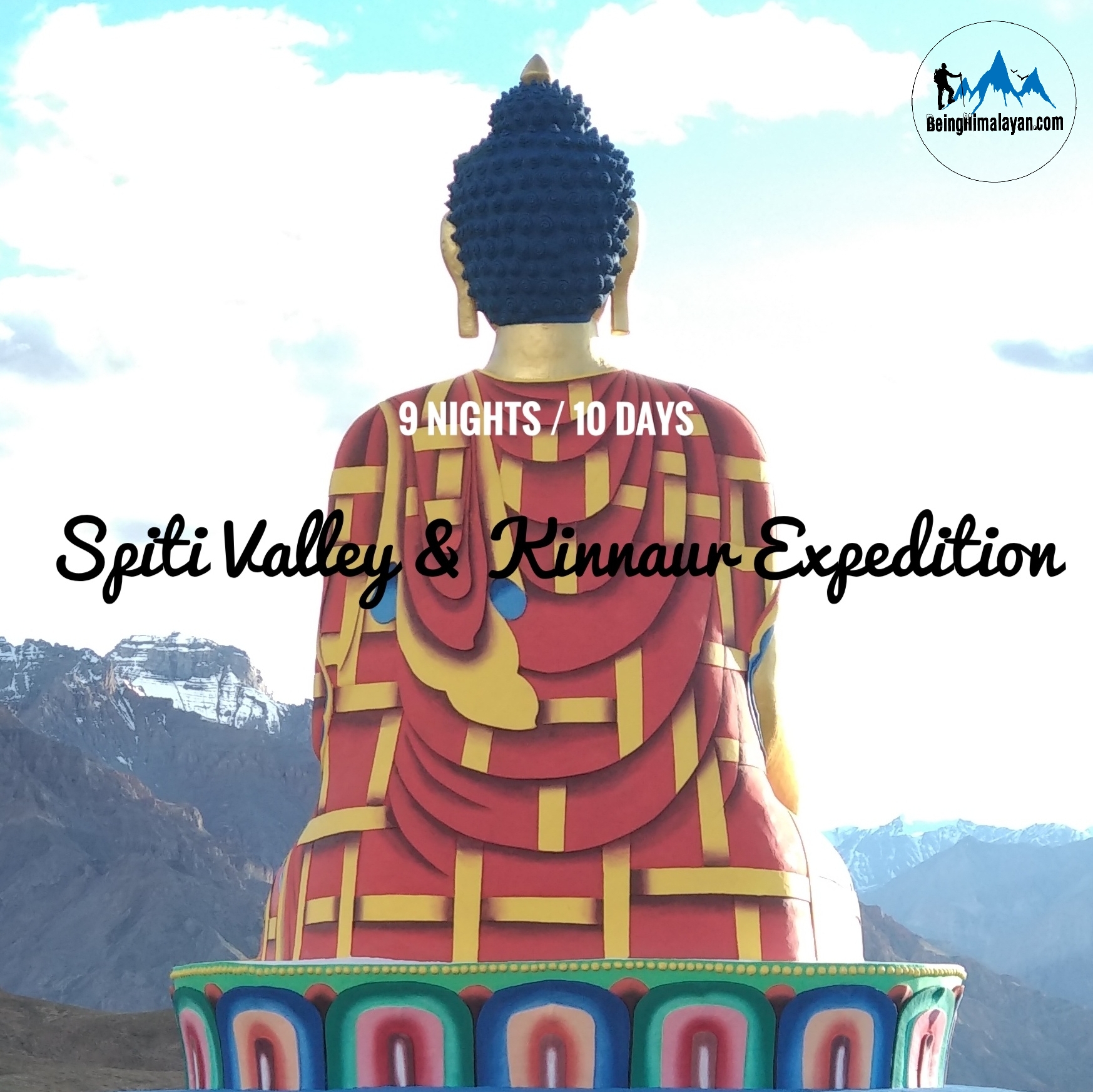Spiti Valley in Winters - A Short but Explicit introduction to Heaven!

Spiti Valley in Winters is an experience that is both enchanting yet perilous. Already being one of the most wonderful travel destinations in Himachal Pradesh, Spiti becomes even more enchanting in winters.
It is certainly the most fulfilling experience to visit Spiti in winters however be informed that the cold temperature and bad weather can make traveling in Spiti very difficult.
Therefore, in this article we try to explain what a first time traveler should expect on a winter trip to Spiti Valley. And how to prepare for a trip to Spiti in winters.
Table of Contents
ToggleWhat you should not expect or do on a winter trip to Spiti Valley?
- Do not expect to cover all popular places: If you are expecting to visit each place on the way and cover all the sightseeing then a Summer trip to Spiti would be a better idea. This is due to the fact that most of the link roads and many main roads as well are closed. Thus places like Chandratal, Kunzum pass etc are closed. Also sometimes the road toward Hikkim and Komic and even Pin valley is also closed if snowfall is too heavy.
- Most of the markets are closed in winters. Only a few shops in Kaza might be open depending on the weather conditions on the day.
- Water gets frozen. Because of the temperatures below 0 degrees, the water pipes get frozen. Most of the natural water sources in this already waterless valley, also get frozen. It becomes a big task for the humble locals to provide water for regular use. Therefore the water based toilets are mostly not available in winters except in a few homestays, who have done enormous effort of insulating the pipes, arrange water from local sources and try to keep the water based toilets usable. Dry/compost based toilets are also available. Although hot water is usually available in limited quantity at the home-stay you’ll be staying. Do not expect to have a shower/bath everyday. Although most people do not want to bathe in such a cold environment anyways.
- No ATM. ATMs will not be working, therefore it is recommended to carry all the cash that you’ll need for the trip with you. Prefer to withdraw the cash you need in Shimla or Rampur.
- Do not expect Luxury. As all the hotels are closed, you should not expected any luxury in Spiti during winters. Only a few homestays are open, where you get a chance to get a glimpse of the local life.
- Cell Phone Networks. As per now (Jan 2021) Jio is one of the main networks is available in Spiti. Major places like Kaza and Tabo have good Jio and Airtel Network. Other villages have a low signal as the work is still in progress. BSNL is also available. For internet Jio is the available in more areas than Airtel and BSNL.
Why you should visit Spiti in Winter?
- Amazing Snow Covered Landscape. Imagine large meadows and mountains fully covered in Snow. The scenery is no less than a heavenly experience. The scenery you see in pictures and videos is nothing compared to the real experience you get in the valley.
- Experience the Local Life. Most hotels are closed and only a few home-stays are open in Spiti Valley during winters. Therefore the absence of most luxuries turns into a blessing and gives you a unique chance to experience the local way of living during winters. You get to see how the people have been surviving in this harsh environment and get a glimpse of their unique culture.
- Spiti Valley in winters is Less Crowded. Most hotels, businesses are closed and even many of the locals move to lower hills during winters. Most importantly, the tourist traffic is very less. Although in Spiti you always experience the peaceful side of the Himalayas, but winters bestow complete serenity on the Travelers.
- Heaven for Wildlife Enthusiasts. During winters most of the Himalayan Wildlife species descend from the high mountains. Therefore, sightings of Ibex, Blue Sheep and the even the magnificent Snow Leopard are possible. The Snow Leopard sightings occur only at a few places, while other wildlife like Yak, blue Sheep & Ibex can be seen much easily at many places. A winter trip to Spiti is a unique chance to spot the wonderful wildlife in its natural habitat.
- Support the Local economy. By trying to promote winter tourism in Spiti Valley, we try to support the local economy in a minute way. At the same time we get to experience the best of Spiti as well.
- Have an Adventure of a lifetime. Spiti in winters is definitely cold, harsh and difficult. But the overall experience of the trip is one of the most adventurous journeys that one will take in a lifetime.
How to reach Spiti Valley in Winters?
Out of the two routes to reach Spiti, the Manali route is closed in winters. This is because the treacherous Rohtang La or Rohtang pass that connects Lahaul & Spiti district to Manali gets buried under a great deal of snow.
This leaves us with second route on the Hindustan Tibet highway, locally known as NH 22; which goes through Shimla & Kinnaur. This is one of the most recommended routes to Spiti because you gain altitude gradually. The gradual altitude gain helps in the acclimatization of the body to the high altitude of Spiti Valley. Acclimatization is very important to avoid AMS (Acute Mountain sickness) which occurs mostly when you travel above 8000 feet above sea level.
Public transport i.e Himachal roadway buses run on this route but their services are severely affected during winters due to heavy snowfall. Therefore the best and recommended way to get to the Spiti Valley during winters is by joining a Spiti Winter Expedition.
Recommended tips for a Winter Trip to Spiti Valley
- Carrying warm clothing is one of the most obvious and important things on a trip to Spiti Valley. Therefore while packing, keep in mind the average temperature of Spiti Valley is around – 10 degrees.
- Carry Sunglasses, and cover your skin as the sun glare is usually high in Spiti and chances of sunburn are also high.
- Stay hydrated. You might not feel thirsty but you can easily get dehydrated in the cold. Drinking plenty of fluids keep you healthy and reduces the chances of AMS (Acute Mountain sickness).
- Acute Mountain sickness is a phenomena that occurs when one travels above 8000 feet in a short period of time. The high altitude and lack of oxygen in the air can cause dizziness, nausea, constant headache, breathlessness and can even be fatal if ignored. AMS can be avoided by increasing the altitude gradually instead of hurrying towards Spiti. Also eating more carbs, drinking plenty of water and AMS medication. Consult your doctor about using a cure for AMS known as Acetazolamide, sold under the brand Diamox.
Related Packages

Spiti Valley and Ladakh Tour 16 Nights / 17 Days
Adventures Packages, Couple Getaways, Custom trips, Expeditions, Family Holidays, High Altitude Passes, Ladakh, Local Culture & People, Monasteries & Spiritual Sites, Photography & Scenic Views, Road Trips, Spiti Valley, Summer in Himalayas, Travel Itineraries




